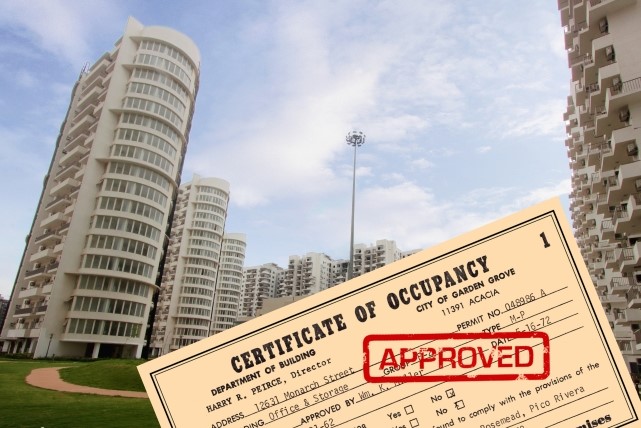Certificate of Occupancy

Find out why you need it and how it works
Hopefully you won’t have to wait 20 years for your new dream home to be built – that’s how long Cheops (ancient Egyptian pharaoh) had to hang around twiddling his thumbs whilst his Great Pyramid of Giza was going up – but you will no doubt be keen to move in as soon as you can.
The “Certificate of Occupancy” is issued in terms of section 14(1) of the National Building Regulations and Building Standards Act, 1977 (Act 103 of 1977).
- But before you do so you must obtain a Other local council departments will not issue licenses or certificates before a “Certificate of Occupancy” is produced.
from your local municipality. This applies whether you are moving in yourself or putting in a tenant. It also applies both to building from scratch and to carrying out any “alteration, conversion, extension, rebuilding, re-erection, subdivision of or addition to, or repair of any part of the structural system of, any building”.
Why bother to comply?
- Firstly, if you do not comply, you will have problems with your bank if your home is mortgaged, and – perhaps more critically – you could find yourself without insurance cover.
- Secondly, you will not be able to arrange water and electricity accounts and connections from the municipality.
- Thirdly, it is a criminal offence to occupy or use (or permit occupation or use) of the building without authority (or to the extent that “it is essential for the erection of such building”).
- Fourthly, Other local council departments and government departments will not issue licenses or certificates before a “Certificate of Occupancy” is produced.
A couple of notes here –
- In necessity, you may be able to get temporary, conditional permission to use a building before the Certificate is issued, – a 7(6) order but there are council fees to be paid and usually only valid for 180 days
- If the building later falls into disrepair or is deemed unsafe, the municipality may revoke the Certificate.
- If you are moving into a new/renovated building as a tenant, ask for a copy of the Certificate from the landlord to ensure that your occupancy is lawful for the building/complex or premises
- Just remember that from 2011 you as a tenant must also have a “Certificate of Occupancy” for your premises.
How does the Certificate protect you?
The municipality will only issue the Certificate once satisfied that your building is fully completed in accordance with the approved building plans, that all conditions of approval and other municipal requirements have been met, and that all necessary compliance certificates (structural completion, electrical, plumbing, gas and so on) have been issued.
The end result – assuming of course that the municipality has done its job properly – is confirmation that your builder has complied with all regulations and requirements. For both safety and financial reasons that is an important protection for both you and your family, and for any tenants or other occupiers.
Who must obtain it?
In practice, your builder or project manager should obtain the Certificate for you after final municipal inspections have confirmed compliance as above, but make sure you get it before you take occupation. Then file it away somewhere safe in case of future problems or queries. The City has to issue a certificate of occupancy for every building that is built before it is occupied, as required by the National Building Regulations (NBR) and the Building Standards Act. This is to show that all requirements have been met and safeguards the owner or tenant.

